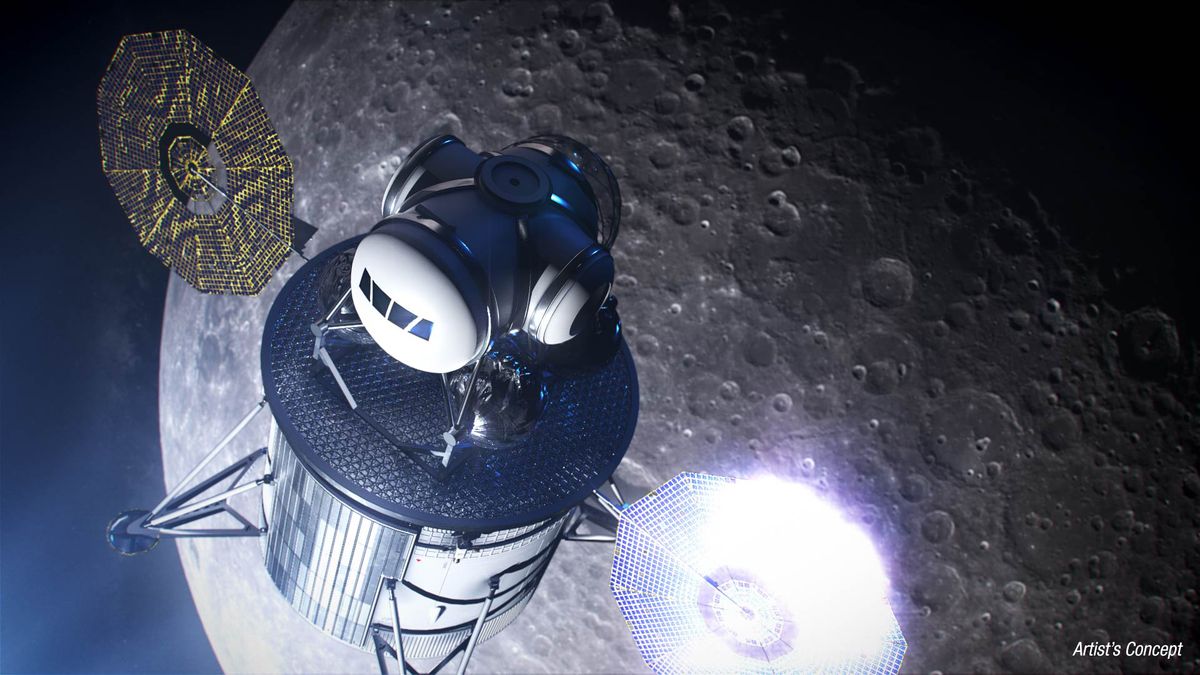
NASA is serious about making its next moonshot a joint public-private project.
The space agency is granting a total of $45.5 million to 11 U.S. companies, including Elon Musk's SpaceX and Jeff Bezos' Blue Origin, to help them develop spacecraft that can get astronauts to the lunar surface. NASA aims to achieve this goal by 2024, as part of its ambitious Artemis program.
The money will be awarded via NASA's Next Space Technologies for Exploration Partnerships (NextSTEP) program. Each company must contribute at least 20% of its total project costs, agency officials said.
Related: Can NASA Really Put Astronauts on the Moon in 2024?
"To accelerate our return to the moon, we are challenging our traditional ways of doing business. We will streamline everything from procurement to partnerships to hardware development and even operations," Marshall Smith, director for human lunar-exploration programs at NASA headquarters in Washington, D.C., said in a statement today (May 16).
"Our team is excited to get back to the moon quickly as possible, and our public/private partnerships to study human landing systems are an important step in that process," Smith added.
NASA's moon plan involves a small space station called Gateway, which the agency aims to start building in lunar orbit a few years from now. Gateway will serve as a surface-exploration hub; astronauts will depart from the orbiting outpost and return to it when their work on the gray dirt is done.
Three distinct spacecraft will be required for these round-trip surface jaunts, NASA officials explained: a "transfer element," which will carry astronauts from Gateway to low lunar orbit; a "descent element," which will take them down to the ground; and an "ascent element" for the voyage back to Gateway.
Private Landers for the Moon
The newly announced funds will help the 11 companies study and build their versions of these three elements, as well as a potential "refueling element" that could boost the overall system's reusability. For example, Blue Origin's award calls for the company to perform one descent-element study and one transfer-element study and to build one transfer-element prototype.
Boeing's plate is even fuller. The aerospace giant was tapped to perform studies of the descent, transfer and refueling elements and to build prototypes of each of these vehicles (and two prototypes of the descent element, in fact).
SpaceX's award is for one descent-element study.
The other eight companies receiving money are Aerojet Rocketdyne, Dynetics, Lockheed Martin, Masten Space Systems, Northrop Grumman, OrbitBeyond, Sierra Nevada Corp. and SSL. Here's what each of these companies will do, according to NASA's news release.
Aerojet Rocketdyne: Perform one transfer vehicle study.
Blue Origin: Perform a descent element study, transfer vehicle study and develop one transfer vehicle prototype.
Boeing: Perform a descent element study, develop two descent element prototypes, perform a transfer vehicle study, develop a transfer vehicle prototype, perform a refueling element study and develop one refueling element prototype.
Dynetics: Perform a descent element study and develop five descent element prototypes.
Lockheed Martin: Provide a descent element study, four descent element prototypes, one transfer vehicle study and one refueling element study.
Masten Space Systems: Provide a descent element prototype
Northrop Grumman Innovation Systems: Provide one descent element study, four descent element prototypes, one refueling element study, and one refueling element prototype.
OrbitBeyond: Provide two refueling element prototypes
Sierra Nevada Corporation: Provide a descent element study, a descent element prototype, one transfer vehicle study, one transfer vehicle prototype and one refueling element study.
SpaceX: Perform a descent element study.
SSL: Provide a refueling element study and one refueling element prototype.
A crewed lunar return became U.S. official policy in December 2017, when President Donald Trump signed Space Policy Directive 1. NASA was initially targeting the late 2020s for the next human mission to the lunar surface, but Vice President Mike Pence announced the more aggressive 2024 timeline this past March.
That initial crewed landing isn't the end goal for Artemis. The program aims to establish a long-term, sustainable human presence on and around the moon, as a prelude to crewed Mars missions. The moon is a great steppingstone for the much tougher voyage to the Red Planet, NASA officials have said.
Mike Wall's book about the search for alien life, "Out There" (Grand Central Publishing, 2018; illustrated by Karl Tate), is out now. Follow him on Twitter @michaeldwall. Follow us on Twitter @Spacedotcom or Facebook.
Bagikan Berita Ini














0 Response to "NASA Awards $45.5 Million for Private Moon Lander for Work on Project Artemis - Space.com"
Post a Comment